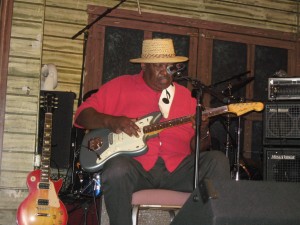At a large gathering a few months ago, my wife introduced me to Julie, a woman she had met not long before. As Julie and I got to know each other and shared information about our lives, work and activities, I told her about my learning to play guitar and how much I enjoyed it. I probably said that playing with a band was like a dream come true (when I first started taking lessons in 2009, it seemed a remote fantasy).
After I’d talked about this, she said, “I can see how passionate you are about music by the way your face lights up.”
I thought about this moment several times later and was reminded of how helpful others can be in reflecting who we are. Sometimes people remind us of aspects of ourselves we weren’t conscious of or ignored. In this case, I was well aware that music was a passion for me, but I was happy that it was obvious even to a casual acquaintance.
In thinking about this encounter, I was also reminded of the often-quoted passage in Henry David Thoreau’s Walden:
The mass of men lead lives of quiet desperation. What is called resignation is confirmed desperation. From the desperate city you go into the desperate country, and have to console yourself with the bravery of minks and muskrats. A stereotyped but unconscious despair is concealed even under what are called the games and amusements of mankind. There is no play in them, for this comes after work. But it is a characteristic of wisdom not to do desperate things.
I suspect too many of us become resigned to our lives without even realizing it. The challenges of life can at times be overwhelming and can leave us feeling we have few or no choices. When we’re caught up in the seemingly urgent demands of daily life, we can lose track of priorities. It’s important to find a few moments of quiet to listen to the voice within us. If we listen well enough, we may hear a calling that has gone unheeded.
I’m very grateful to have discovered my passion for music, especially playing blues. It enriches my life in so many ways. I fervently wish that everyone might discover at least one creative activity they feel passionate about whether it’s music, writing, cooking or knitting.
